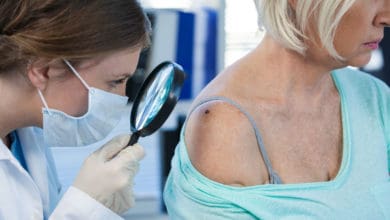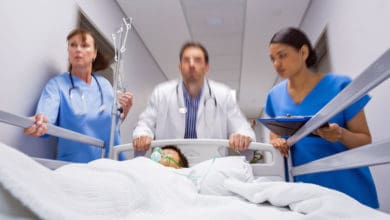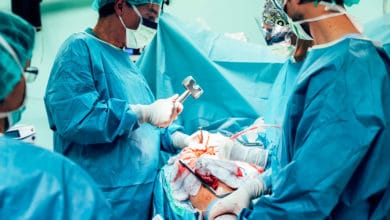If you want a career as a physiatrist, here is how competitive the medical specialty is to match into a physical medicine and rehabilitation (PM&R) residency. Physical medicine and rehabilitation is the branch of medicine that seeks to promote healing and rehabilitation of patients. PM&R is also referred to as physiatry.
Statistics on the Physical Medicine and Rehabilitation Match
As of the most recent NRMP data, PM&R had a total of 725 applicants and 532 spots. This equates to 1.36 applicants per position. Of the 267 U.S. MD seniors who applied, 43 did not match.
| Total Positions | Total Number of Applicants | Number of Applicants per Position |
| 532 | 725 | 1.36 |
Osteopathic (DO) Students Matching into PM&R
The total number of DO Senior Applicants was 275. Of those, 176 matched, for a 64.00% match percentage. This makes physical medicine and rehabilitation a Friendly field for osteopathic students.
| Total DO Applicants | Matched DO Applicants | DO Match Percentage | |
| 275 | 176 | 64.00 |
International Medical Graduates (IMGs) Matching into PM&R
Because there are only 0.58 U.S. MD applicants per 1 program spot, physical medicine and rehabilitation is considered to be Very Friendly for IMGs students.
Honors, Research and Awards for PM&R Residency Candidates
The average matched U.S. applicant had 8.9 volunteer experiences and 3.5 work experiences. They had 3.1 research experiences and 6.2 abstracts, presentations and publications. That makes this specialty on where the number of publications needed is Low.
| Research Experiences | Abstracts, Presentations and Publications | Work Experiences | Volunteer Experiences |
| 3.1 | 6.2 | 3.5 | 8.9 |
Average Step 2 Scores for PM&R
The mean USMLE Step 2 CK score was 242. The overall competitiveness level of PM&R is Low for a U.S. senior.
How long is a residency in physical medicine and rehabilitation? What is the lifestyle like for a PM&R resident?
Compared to other residencies, PM&R has a Medium training length. As far as lifestyle, physiatrists generally have a Low stress lifestyle. Of course, lifestyle is very subjective and if you love what you do, it does not matter! And if you hate what you do, it can still be rough no matter what. In medicine, you should find the specialty that makes you enjoy your everyday interactions with patients, staff and colleagues.
What is the average salary for physiatrists?
The average salary post-graduation from a PM&R residency is $308,000, provided one does not go on to sub-specialty training which can change the salary substantially. Academic versus private practice as well as location also play a large role in physician compensation.
What are fellowships one can do from a PM&R residency?
Following the successful completion of general PM&R residency, some physicians may choose to continue their graduate medical education with subspecialty training. Board-certified subspecialists complete additional training and qualifying examinations beyond those required for board certification in physical medicine and rehabilitation. Currently, the American Academy of Physical Medicine and Rehabilitation certifies PM&R physicians. Some fellowships include:
What are the best physical medicine and rehabilitation residencies in the country?
The best residency for PM&R, or any specialty, is very driven by personal preference and situation. How close you are to family, loved ones, the type of training environment, the opportunities available are all things to take into consideration above and beyond name recognition of a program. However, there are some highly regarded names in the world of physical medicine and rehabilitation including:
-
- McGaw Medical Center of Northwestern University Program
- Icahn School of Medicine at Mount Sinai Program
- New York University School of Medicine Program
- Jackson Memorial Hospital/Jackson Health System Program
Much of the data above is available from the AAMC Charting the Outcomes report.
FAQ: What Else Can I Learn About Physical Medicine and Rehabilitation Residency?
Q: What makes physical medicine and rehabilitation (PM&R) an appealing specialty?
A: PM&R, also known as physiatry, is appealing because it focuses on improving the quality of life for patients with physical impairments or disabilities. Physiatrists specialize in non-surgical treatment of musculoskeletal conditions, neurological disorders, and chronic pain, using a holistic approach to restore function and independence. The specialty is rewarding for those who enjoy working closely with patients to achieve tangible improvements in their daily lives.
Q: How many PM&R residency positions are available each year?
A: Approximately 400-450 PM&R residency positions are offered annually in the United States. While the specialty is moderately competitive, programs look for applicants with strong interpersonal skills, academic performance, and a commitment to patient-centered rehabilitation.
Q: Do I need research experience to match into PM&R?
A: Research experience is not mandatory but can enhance your application, especially for competitive programs. Projects related to musculoskeletal medicine, neurological recovery, or rehabilitation technologies demonstrate your interest in advancing the field and can set you apart as an applicant.
Q: How important are away rotations for matching into PM&R?
A: Away rotations can be beneficial, especially if you are targeting specific programs or want to gain exposure to diverse patient populations and rehabilitation settings. These rotations allow you to showcase your clinical skills, work ethic, and enthusiasm for PM&R, which can lead to strong letters of recommendation.
Q: What should I include in my personal statement for PM&R?
A: Your personal statement should highlight your passion for improving patients’ functional outcomes, your ability to work in a team-based environment, and your interest in holistic, patient-centered care. Discuss clinical or personal experiences that inspired your interest in PM&R and outline your long-term career goals in the specialty.
Q: What types of conditions do physiatrists treat?
A: Physiatrists treat a wide range of conditions, including spinal cord injuries, traumatic brain injuries, stroke, musculoskeletal injuries, chronic pain, arthritis, sports injuries, and amputations. They also manage conditions like cerebral palsy and multiple sclerosis, focusing on maximizing patient function and quality of life.
Q: What procedures do physiatrists typically perform?
A: Physiatrists perform procedures such as joint injections, trigger point injections, nerve blocks, electromyography (EMG), and ultrasound-guided interventions. They may also prescribe and oversee physical therapy, occupational therapy, and assistive devices like braces or prosthetics.
Q: Are there opportunities for physiatrists to focus on research?
A: Yes, PM&R offers numerous research opportunities in areas such as neurorehabilitation, prosthetic design, regenerative medicine, and biomechanics. Physiatrists contribute to advancements in rehabilitation technologies, pain management strategies, and outcomes research to improve patient care.
Q: What subspecialties are available within PM&R?
A: PM&R offers several subspecialties, including:
– Spinal Cord Injury Medicine: Managing patients with spinal cord injuries.
– Brain Injury Medicine: Focusing on rehabilitation after traumatic brain injuries and strokes.
– Pain Medicine: Treating chronic pain with interventional and non-interventional approaches.
– Sports Medicine: Managing sports-related injuries and optimizing athletic performance.
– Pediatric Rehabilitation: Treating children with developmental and physical disabilities.
– Neuromuscular Medicine: Diagnosing and treating conditions like ALS and muscular dystrophy.
– Hospice and Palliative Medicine: Providing care for patients with life-limiting illnesses.
Q: What does the lifestyle of a physiatrist typically look like?
A: Physiatrists often enjoy a balanced lifestyle, with many working in outpatient clinics with regular office hours. Hospital-based physiatrists or those in subspecialties like spinal cord or brain injury medicine may have more variable schedules. The diversity of practice settings allows for flexibility and a satisfying work-life balance.
Q: What innovations are shaping the future of PM&R?
A: Innovations in PM&R include advancements in regenerative medicine, robotic exoskeletons, and virtual reality-based rehabilitation. Developments in neuromodulation, advanced prosthetics, and wearable technologies are also transforming how physiatrists improve patient outcomes and restore function.
Q: How does PM&R intersect with other specialties?
A: Physiatrists work closely with neurologists, orthopaedic surgeons, pain specialists, and physical and occupational therapists. They often collaborate with social workers, psychologists, and speech therapists to provide comprehensive, multidisciplinary care for their patients.
Q: Are there fellowship opportunities after completing a PM&R residency?
A: Yes, fellowship opportunities include pain medicine, sports medicine, spinal cord injury medicine, brain injury medicine, and pediatric rehabilitation. Fellowships provide advanced training and prepare physiatrists for leadership roles in clinical practice or research.
Q: What role do physiatrists play in patient outcomes?
A: Physiatrists play a critical role in improving patient outcomes by restoring function, reducing pain, and enhancing quality of life. Their expertise in rehabilitation and personalized treatment plans helps patients recover from injuries or adapt to chronic conditions more effectively.
Q: What are the career opportunities for physiatrists?
A: Physiatrists can work in private practice, academic medicine, rehabilitation hospitals, or outpatient clinics. Many also pursue careers in sports team affiliations, industry roles, or research. The specialty’s versatility allows for diverse and fulfilling career paths.
Q: How do physiatrists approach complex cases?
A: Physiatrists use advanced diagnostic tools, interdisciplinary collaboration, and individualized care plans to approach complex cases. They often integrate physical therapy, assistive devices, and minimally invasive procedures to optimize patient recovery and function.
Q: How do I find shadowing opportunities with a physiatrist?
A: Contact PM&R departments at rehabilitation hospitals or academic medical centers. Networking through medical school advisors, mentors, or PM&R interest groups can also help you connect with physiatrists open to shadowing opportunities.
Q: What professional organizations can I join as a PM&R student?
A: Students interested in PM&R can join organizations such as the American Academy of Physical Medicine and Rehabilitation (AAPM&R), Association of Academic Physiatrists (AAP), and American Board of Physical Medicine and Rehabilitation (ABPMR). These organizations provide mentorship, networking, and access to educational resources and conferences.
Q: How early should I start preparing for a career in PM&R?
A: Begin early by excelling in anatomy, musculoskeletal medicine, and neuroscience. Join PM&R interest groups, engage in rehabilitation-related research, and seek shadowing opportunities. Clinical rotations in rehabilitation medicine during medical school can help solidify your interest and strengthen your residency application.
Did You Know?
- Physical Medicine and Rehabilitation (PM&R) was established in the mid-20th century:
PM&R, also known as physiatry, became a recognized specialty in 1947, driven by the need to rehabilitate soldiers returning from World War II. The specialty focuses on restoring function and quality of life for individuals with physical impairments and disabilities.
- Physiatrists are experts in non-surgical treatment:
Unlike many other specialties, physiatrists focus on non-surgical approaches to treat musculoskeletal injuries, neurological disorders, and chronic pain. They use therapies such as physical therapy, medication management, and advanced interventions like ultrasound-guided injections.
- PM&R integrates cutting-edge technologies:
Physiatrists leverage innovations like robotic exoskeletons, virtual reality rehabilitation, and neuromodulation techniques to improve mobility and independence. These technologies are transforming the rehabilitation process, especially for patients with spinal cord injuries, strokes, and amputations.
Explore Other Specialties:
| Specialty | Average Step 2 Score (Matched) |
|---|---|
| Anesthesiology | 246 |
| Child Neurology | 246 |
| Dermatology | 256 |
| Diagnostic Radiology | 249 |
| Emergency Medicine | 247 |
| Family Medicine | 238 |
| General Surgery | 249 |
| Internal Medicine | 248 |
| Internal Medicine/Pediatrics | 250 |
| Interventional Radiology | 255 |
| Neurological Surgery | 252 |
| Neurology | 245 |
| Obstetrics and Gynecology | 248 |
| Orthopaedic Surgery | 255 |
| Otolaryngology | 256 |
| Pathology | 242 |
| Pediatrics | 245 |
| Physical Medicine and Rehabilitation | 241 |
| Plastic Surgery | 256 |
| Psychiatry | 241 |
| Radiation Oncology | 250 |
| Vascular Surgery | 247 |



